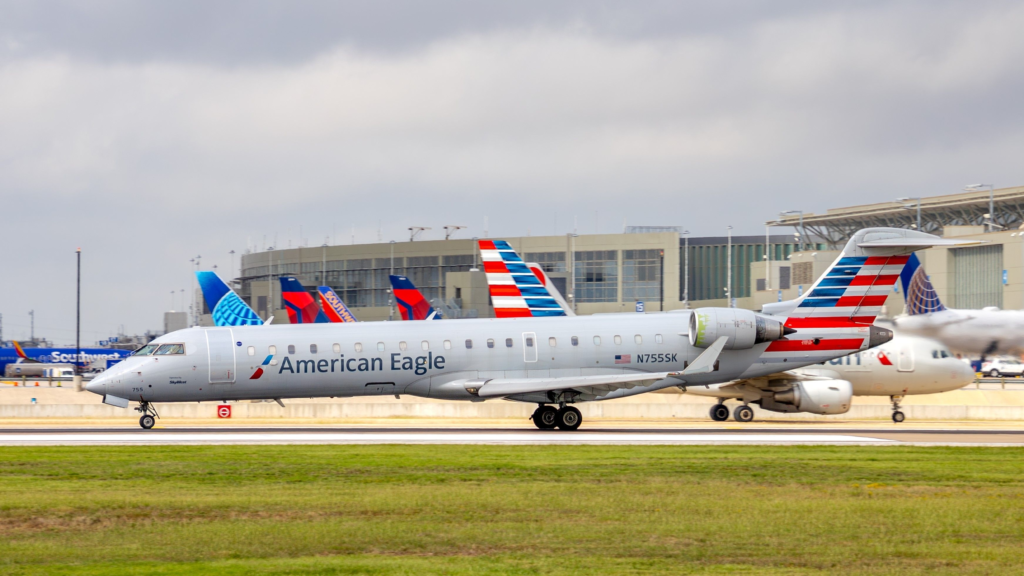In an encore to the strike held by PSA Airlines flight attendants (FAs) in March 2025, the carrier’s FAs held a rally today, August 18. There were similar rallies held nationwide by other FAs of the regional operator for ![]() American Airlines (AA).
American Airlines (AA).
The union representatives have been in negotiations for years to level the pay disparity, which currently has the average PSA attendants’ pay rates at 45% less than AA attendants. The Association of Flight Attendants (AFA) dubbed today, the “Day of Action,” in its call for support to other airlines FAs.
On The Frontlines For US Airlines
After voting 99.2% in approval of strikes this year, the FAs from PSA are on their second round. PSA Airlines flight attendants picketed at  Charlotte Douglas International Airport (CLT),
Charlotte Douglas International Airport (CLT),  Ronald Reagan Washington National Airport (DCA),
Ronald Reagan Washington National Airport (DCA),  Dallas/Fort Worth International Airport (DFW), James M Cox Dayton International Airport (DAY), and
Dallas/Fort Worth International Airport (DFW), James M Cox Dayton International Airport (DAY), and  Philadelphia International Airport (PHL).
Philadelphia International Airport (PHL).
In a September 2024 AFA announcement regarding the strike votes, Sara Nelson, international president of AFA, stated:
“Flight Attendants at PSA and other regional airlines across the industry fly the same routes and provide the same service as mainline Flight Attendants. It’s time they get paid like it. Regional Flight Attendants deserve pay and benefits that reflect the value of their hard work.”
United Front For All Airline Workers
The Association of Flight Attendants-Communications Workers of America (AFA-CWA) represents 55,000 flight attendants between 20 airlines across the United States. That includes one of the “big three,” United Airlines, and is currently in talks to organize Delta Air Lines employees. That will leave just AA workers without union representation.
AFA described its strike strategy as CHAOS™, or Create Havoc Around Our System™. The intended purpose can range from striking to affect an entire airline, airport, or simply a single flight. The union decides when, where and how to strike without notice to management or passengers after the National Mediation Board (NMB) declares that negotiations are deadlocked.
The NMB releases both parties into a 30-day “cooling off” period, but the deadlock also triggers a strike deadline. The slogan for the March 2025 pickets was, “It’s our turn.” Time will tell if the latest rounds of strikes have a disruptive effect that forces PSA back to the bargaining table. PSA Airlines is a wholly-owned subsidiary of AA, operating 500 daily flights to nearly 100 destinations.
First Responders Facing High Risks
FAs are expected to respond to a spectrum of emergency situations ranging from medical to altercations and potential criminal activity. That demands they take action like rendering first-aid, preventing and intervening in illegal or violent activity, and even forcing them to subdue passengers in severe cases if an air marshal is not aboard. Recent years has also seen a significant rise in the frequency of unruly and violent passenger cases.
PSA Airlines suffered the tragic loss of its aircrew and passengers, who were all killed in the January 2025 collision between an American Eagle regional CRJ and a US Army UH-60 Blackhawk helicopter. The crash occurred over the water on the final approach descent to Ronald Reagan Airport (DCA) and there were no survivors on either aircraft in the aftermath.
The accident saw the death of sixty travelers, two pilots, two flight attendants, and the three-person crew of the Army helicopter. The accident highlights the risk to aircrews; despite flying being one of the safest modes of transportation, when tragedy strikes, it is often fatal for all involved.
The people to work every day to make America’s skies a safe and pleasant place for everyone are doing more than just punching a clock; they perform an important public and company service that is integral to national transportation as well as thesuccess or failure of air carriers.






